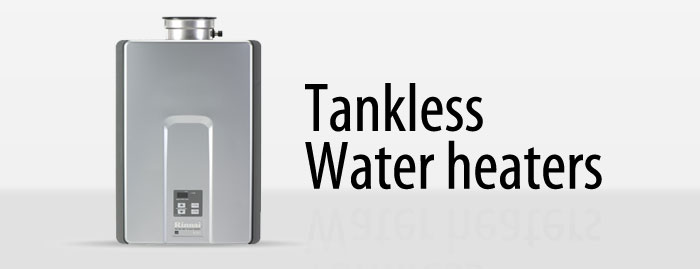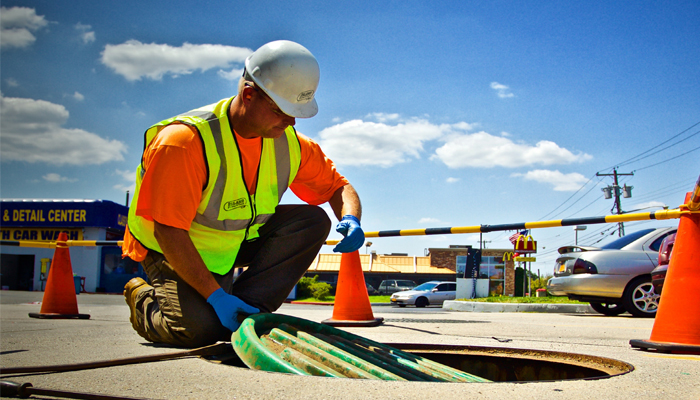Energy Saving Tips
Buy Appliances that are energy efficient
When it comes to shopping for and comparing energy-efficient appliances and home electronics, look for the ENERGY STAR® and EnergyGuide labels. ENERGY STAR labels appear on appliances and home electronics that meet strict energy efficiency criteria established by the U.S. Department of Energy and U.S. Environmental Protection Agency. The ENERGY STAR labeling program includes most home electronics and appliances except for stove ranges and ovens. In late 2009 or early 2010, you can receive rebates to purchase new ENERGY STAR-qualified appliances when you replace your used appliances.

EnergyGuide Label
The Federal Trade Commission requires EnergyGuide labels on most home appliances (except for stove ranges and ovens), but not home electronics, such as computers, televisions, and home audio equipment. EnergyGuide labels provide an estimate of the product's energy consumption or energy efficiency. They also show the highest and lowest energy consumption or efficiency estimates of similar appliance models.
 When to turn off your lights?
When to turn off your lights?
The cost effectiveness of when to turn off lights depends on the type of lights and the price of electricity. The type of light is important for several reasons. All types of lights have a nominal or rated operating life, which is the total number of hours that they will provide a specified level or amount of light. However, the operating life of most types of light bulbs is affected by how many times they are turned on and off. For those bulbs, the more often they are switched on and off, the lower their operating life. The exact number of hours that switching lights on and off reduces the total operating life depends on the type of light and how many times it is switched on and off.
Incandescent Lighting
Incandescent lights (or bulbs) should be turned off whenever they are not needed. Nearly all types of incandescent light bulbs are fairly inexpensive to produce and are relatively inefficient. Only about 10% of the electricity that incandescent lights consume results in light—the rest is turned into heat. Turning the light(s) off will keep a room cooler, an extra benefit in the summer. Therefore, the value of the energy saved by not having the lights on will be far greater than the cost of having to replace the bulb.
Fluorescent Lighting
The cost effectiveness of turning fluorescent lights off to conserve energy is a bit more complicated. For most areas of the United States, a general rule-of-thumb for when to turn off a fluorescent light is if you leave a room for more than 15 minutes, it is probably more cost effective to turn the light off. Or in other words, if you leave the room for only up to 15 minutes, it will generally be more cost effective to leave the light(s) on. In areas where electric rates are high and/or during peak demand periods, this period may be as low as 5 minutes.
Fluorescent lights are more expensive to buy, and their operating life is more affected by the number of times they are switched on and off, relative to incandescent lights. Therefore, it is a cost trade-off between saving energy and money by turning a light off "frequently" and having to replace the bulbs "more" frequently. This is because the reduction in usable lamp life due to frequent on/off switching will probably be greater than the benefit of extending the useful life of the bulb from reduced use. By frequent we mean turning the light off and on many times during the day.
It is a popularly held belief that fluorescent lights use "a lot" of energy to get started, and thus it is better not to turn them off for "short" periods. There is an increase in power demand when a light is switched on, and the exact amount of this increase depends on the type of ballast and lamp. The ballast provides an initial high voltage for starting the lamp and regulates the lamp current during operation. There are three basic types of ballasts: magnetic (of which there are energy-efficient and not so energy-efficient types), cathode-disconnect, and electronic. All types can operate two or more lamps simultaneously. There are three main methods that are used in a lamp's ballast to start the lamp: preheat, rapid-start, and instant-start.
In any case, the relatively higher "inrush" current required lasts for half a cycle, or 1/120th of a second. The amount of electricity consumed to supply the inrush current is equal to a few seconds or less of normal light operation. Turning off fluorescent lights for more than 5 seconds will save more energy than will be consumed in turning them back on again. Therefore, the real issue is the value of the electricity saved by turning the light off relative to the cost of relamping a fixture. This in turn determines the shortest cost-effective period for turning off a fluorescent light.
The value of the energy saved by turning a fluorescent light (or array of lights) off depends on several factors. The price an electric utility charges its customers depends on the customer "classes," which are typically residential, commercial, and industrial. There can be different rate schedules within each class. Some utilities may charge different rates for electricity consumption during different times of the day. It generally costs more for utilities to generate power during certain periods of high demand or consumption, called peaks. Some utilities can charge commercial and industrial customers more per kilowatt-hour (kWh) during peak periods than for consumption off-peak. Some utilities may also charge a base rate for a certain level of consumption and higher rates for increasing blocks of consumption. Often a utility adds miscellaneous service charges, a base charge, and/or taxes per billing period that could be averaged per kWh consumed, if these are not already factored into the rate.
Energy Savings
To calculate the exact value of energy savings by turning a light off, you need to first determine how much energy the light(s) consume when on. Every bulb has a Watt rating printed on it. For example, if the rating is 40 watts, and the bulb is on for one hour, it will consume 0.04 kWh, or if it is off for one hour, you will be saving 0.04 kWh. (Note that many fluorescent fixtures have two or more bulbs. Also, one switch may control several fixtures—an "array." Add the savings for each fixture to determine the total energy savings.)
Then you need to find out what you are paying for electricity per kWh (in general and during peak periods). You will need to look over your electricity bills and see what the utility charges per kWh. Multiply the rate per kWh by the amount of electricity saved, and this will give you the value of the savings. Continuing with the example above, let us say that your electric rate is 10 cents per kWh. The value of the energy savings would then be 0.4 cents ($ 0.004). The value of the savings will increase the higher the watt rating of the bulb, the greater the number of bulbs controlled by a single switch, and the higher the rate per kWh.
The most cost-effective length of time that a light (or array of lights) can be turned off before the value of the savings exceeds the cost of having to replace bulbs (due to their shortened operating life) will depend on the type and model of bulb and ballast. The cost of replacing a bulb (or ballast) depends on the cost of the bulb and the cost of labor to do it.
Lighting manufacturers should be able to supply information on the duty cycle of their products. In general, the more energy-efficient a bulb/light is, the longer you can keep a light on before it is cost effective to turn it off.
Demand (Tankless or Instantaneous) Water Heaters
Demand (tankless or instantaneous) water heaters provide hot water only as it is needed. They don't produce the standby energy losses associated with storage water heaters, which can save you money. Here you'll find basic information about how they work, whether a demand water heater might be right for your home, and what criteria to use when selecting the right model.
How They Work
Demand water heaters heat water directly without the use of a storage tank. Therefore, they avoid the standby heat losses associated with storage water heaters. When a hot water tap is turned on, cold water travels through a pipe into the unit. Either a gas burner or an electric element heats the water. As a result, demand water heaters deliver a constant supply of hot water. You don't need to wait for a storage tank to fill up with enough hot water. However, a demand water heater's output limits the flow rate.
Typically, demand water heaters provide hot water at a rate of 2–5 gallons (7.6–15.2 liters) per minute. Gas-fired demand water heaters produce higher flow rates than electric ones. Sometimes, however, even the largest, gas-fired model cannot supply enough hot water for simultaneous, multiple uses in large households. For example, taking a shower and running the dishwasher at the same time can stretch a demand water heater to its limit. To overcome this problem, you can install two or more demand water heaters, connected in parallel for simultaneous demands of hot water. You can also install separate demand water heaters for appliances—such as a clothes washer or dishwater—that use a lot of hot water in your home.
Adding Insulation to an Existing Home
Unless your home was specially constructed for energy efficiency, you can usually reduce your energy bills by adding more insulation. Many older homes have less insulation than homes built today, but adding insulation to a newer home may also pay for itself within a few years.
To determine whether you should add insulation, you first need to find out how much insulation you already have in your home and where.
A qualified home energy auditor will include an insulation check as a routine part of a whole-house energy assessment. An energy assessment, also known as a home energy audit, will also help identify areas of your home that are in need of air sealing. (Before you insulate, you should make sure that your home is properly air sealed.)
If you don't want an energy assessment, you need to find out the following:
- Where your home is, isn't, and/or should be insulated
- What type of insulation you have
- The R-value and the thickness or depth (inches) of the insulation you have.
If you live in a newer house, you can probably find out this information from the builder. If you live in an older house, you'll need to inspect the insulation yourself if you don't want an energy assessment.
Inspecting and Evaluating Your Insulation
Check the attic, walls and floors adjacent to an unheated space, like a garage or basement. The structural elements are usually exposed in these areas, which makes it easy to see what type of insulation you have and to measure its depth or thickness (inches).
- Inspect the exterior walls using an electrical outlet:
- Turn off the power to the outlet.
- Remove the outlet cover and shine a flashlight into the crack around the outlet box. You should be able to see if there is insulation in the wall and possibly how thick it is.
- Pull out a small amount of insulation if needed to help determine the type of insulation.
- Check outlets on the first and upper floors, if any, and in old and new parts of a house. Just because you find insulation in one wall doesn't mean that it's everywhere in the house.
- -Inspect and measure the thickness (inches) of any insulation in unfinished basement ceilings and walls, or above crawl spaces. If the crawl space isn't ventilated, it may have insulation in the perimeter wall. If your house is relatively new, it may have been built with insulation outside the basement or foundation walls. If so, the insulation in these spaces won't be visible. The builder or the original homeowner might be able to tell you if exterior insulation was used.
- -Once you've determined the type of insulation you have in these areas and its thickness (inches), see the U.S. Department of Energy's online Insulation Fact Sheet for how to determine the R-values of insulation previously installed in your home.
Landscape shading
Solar heat absorbed through windows and roofs can increase your air conditioner use. Incorporating shading concepts into your landscape design can help reduce this solar heat gain, reducing your cooling costs.
Shading and evapotranspiration (the process by which a plant actively moves and releases water vapor) from trees can reduce surrounding air temperatures as much as 9° F (5°C). Because cool air settles near the ground, air temperatures directly under trees can be as much as 25°F (14°C) cooler than air temperatures above nearby blacktop.
Using shade effectively requires you to know the size, shape, and location of the moving shadow that your shading device casts. Also, homes in cool regions may never overheat and may not require shading. Therefore, you need to know what landscape shading strategies will work best in your regional climate and your microclimate.
Source - Department of Energy











